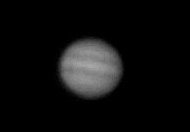Converting a Webcam
For this project you need any old webcam and a laptop computer. You can pick a webcam up for about £20 nowadays, and the simpler the cam the better but make sure it has a CCD chip, not a CMOS one. CCD chips are more sensitive and therefore better for our purpose. For our project we have used the QuickCam Express, because it is cheap and easy to dismantle, which is important for the conversion.
Because my telescope focusser has a T2 thread, I can use T2 adapters to connect cameras, etc. For that reason I also got myself an M42/T2 adapter ring. I used the M42 version because it allows easy fixing to the globular shape of the webcam.
The process is very easy. You take the webcam apart by unscrewing the case, making sure you don't touch any of the electrical components inside it, as they are sensitive to static electricity. One way to prevent problems is to ground yourself by winding a blank copper wire a few time around an unused finger and stick the other end of the wire to a bare metal bit of a radiator.
When the camera is dismantled, you need to remove the lens by simply unscrewing it from the CCD unit. Make sure you don't accidentally touch the CCD surface, as this may ruin it.
Now you can put the camera back together again, this time without the lens. I then covered the hole in the front of the camera with a bit of masking tape to prevent anything from falling onto the CCD. The QuickCam can be fitted to a tripod, which I did, so that I could position it flat on its back. That way, I could easily glue the T2 adaptor to the webcam body. To do this, I took the adaptor apart and glued the M42 part onto the body using 2 component epoxy glue. Make sure that the ring is glued exactly in the same plane as the CCD, otherwise you will not be able to focus the entire image.
After the glue sets, you can put the other part of the T2 adapter on the camera and fix the lot to your scope, either with or without a Barlow lens.
 Taking images, such as you can see to the left, takes quite a bit of practice, and you need a telescope with drives. The reason for having to use drives is that the field of view of the camera is very small, so images will only stay in view and on the chip very briefly. Too short an exposure to adjust with the software supplied with the camera to make some good images. However, if you are not bothered about taking multiple images (I usually take between 50 and 100 for each object I want to photograph), and you practice, you will get some very interesting results.
Taking images, such as you can see to the left, takes quite a bit of practice, and you need a telescope with drives. The reason for having to use drives is that the field of view of the camera is very small, so images will only stay in view and on the chip very briefly. Too short an exposure to adjust with the software supplied with the camera to make some good images. However, if you are not bothered about taking multiple images (I usually take between 50 and 100 for each object I want to photograph), and you practice, you will get some very interesting results.
Image taken with QuickCam Express on 8 February 2001. Images were then processed using PaintShop Pro.
Maarten de Vries